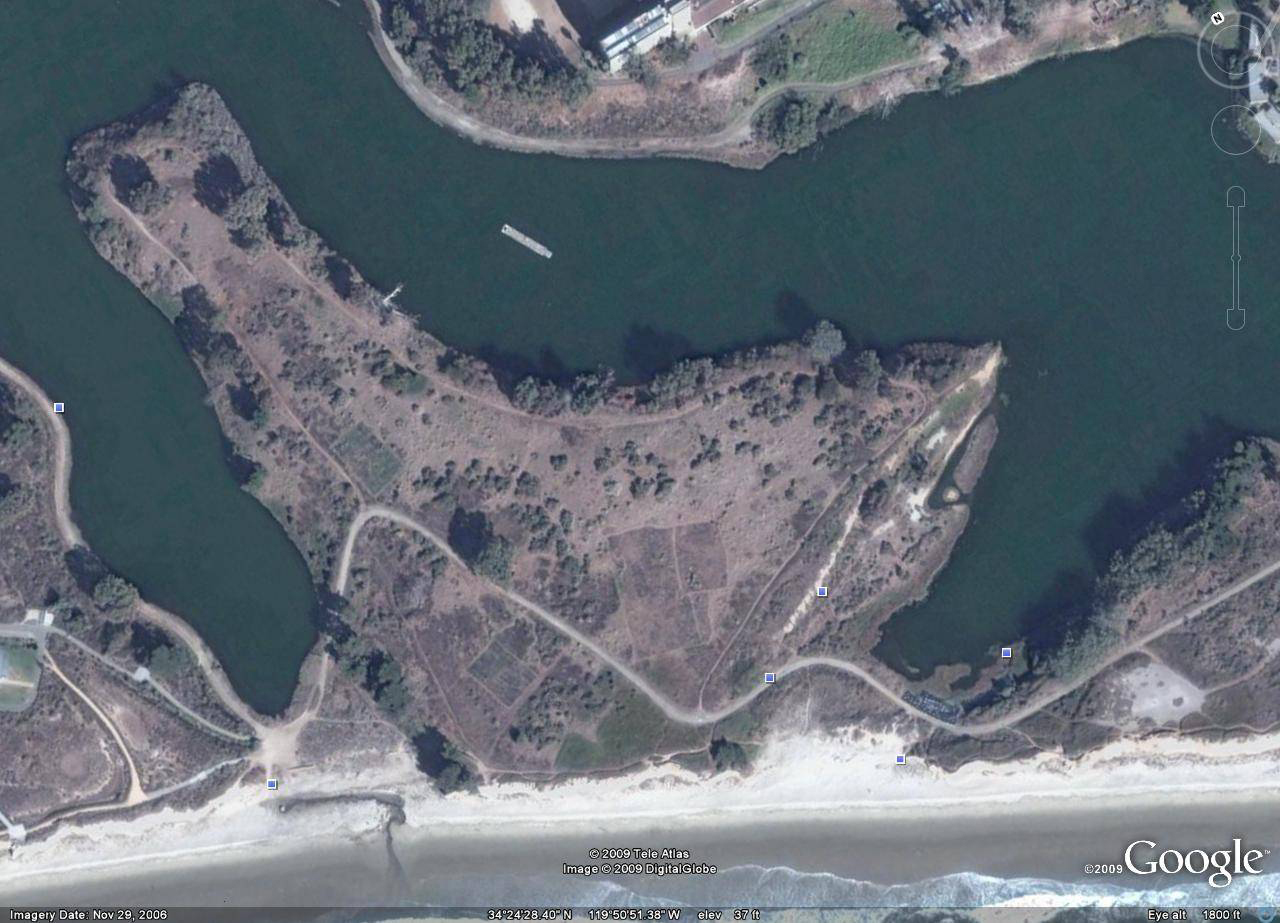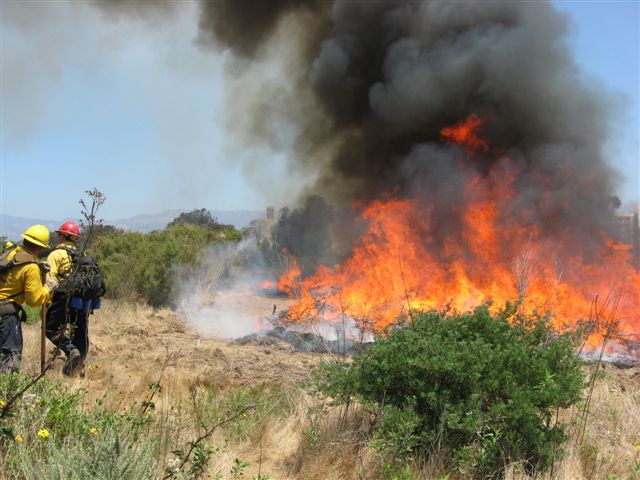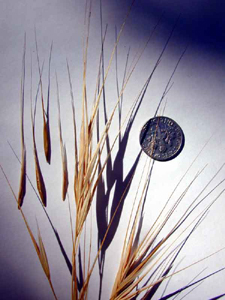On Thursday, June 18, between 11:50 am and 1:06 pm, the Cheadle Center for Biodiversity and Ecological Restoration (CCBER) and County Fire Department conducted a prescribed burn as part of a larger Lagoon ecological restoration program. Funded by the students of UCSB through the Coastal Fund, the 0.5 acre burn occured in two patches on either side of the road. The goal is to remove non-native grass thatch and seed and provide a weed-free planting window for restoration to diverse, native coastal bluff scrub vegetation. Dr. Lisa Stratton, Natural Areas Director and Director of Ecosystem Management at CCBER, describes the burn as follows:
This burn is a management burn that follows on the heels of a 3 year prescribed burn study conducted by Alice Levine under supervision from Carla D’Antonio and CCBER for her Master’s degree. The goal of the experiment was to assess what level of intervention is necessary to convert annual grasslands dominated by non-native mediterranean weedy grasses (Bromus diandrus, primarily [rip gut brome]) to native coastal sage and coastal bluff scrub vegetation. She compared the effects of supplemental fuel, existing fuel levels, and control plots for the effects on the non-native and native seedbank and found that the supplemental fuel (dried baccharis pilularis at about 1.5 feet thick) created enough surface heat (200 – 500 degrees C) to turn a non-native seedbank of about 12,000 seeds per square meter to about 400 seeds per square meter. This significantly reduces the competition that native plants will face when trying to establish. She also compared the relative benefits of seeding (adding native seed), planting seedlings of natives, and letting whatever might be in the seed bank grow out. She found that certain species do well from seed (especially Artemisia californica and Eriogonum parvifolium), and others did well from seedlings. There are surviving plants from all of the 13 species she planted or seeded. The most important finding was that the supplemental fuel created a long term opening on the site, free from non-native grasses, which allowed the natives to establish. Once established, the natives have been able to survive, flower, seed and thrive, even without follow up weeding. We also found that there is very little to no native seed bank existing, and that supplementing the site with seeds and plants of natives will be necessary to restore it. Fire alone is not sufficient, and adding native seeds and seedlings alone is not sufficient, unless you have an army of hand-weeders over several years to reduce competition for light, water, and nutrients.
Our goal with this burn was to burn about 1/2 – 3/4 of an acre with supplemental fuel and then establish large patches of native species that have been collected (seed) and grown from locally native plants. We’ll create a diverse assemblage of about 15 or more species that will provide a diversity of resources for birds, insects, and other animals throughout the year. This can help students and others gain exposure to native, non-weedy landscapes along the coast that are extremely rare under current development pressures.
This restoration is funded by The Coastal Fund, which is generated from lock-in fees paid by UCSB students, and a granting program run by a board of students. In conjunction with the fire, we are also controlling iceplant (carpobrotus edulis) on lagoon island through solarization with black plastic and then planting seedlings. The funding provided resources for student interns and student workers, funding to buy equipment for the hotshot fire team from the County, and funding for soil and pots to grow the plants. We hope to continue burning every few years and slowly expand the restoration across the whole “lagoon island.”






